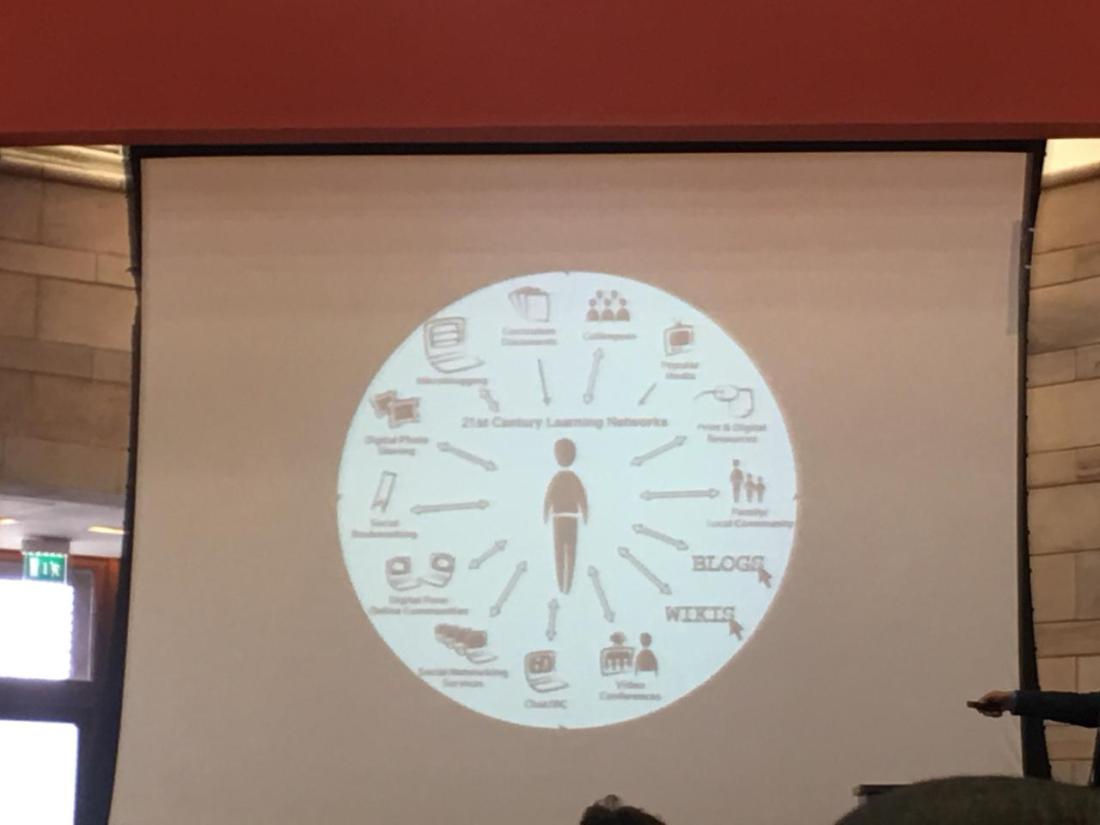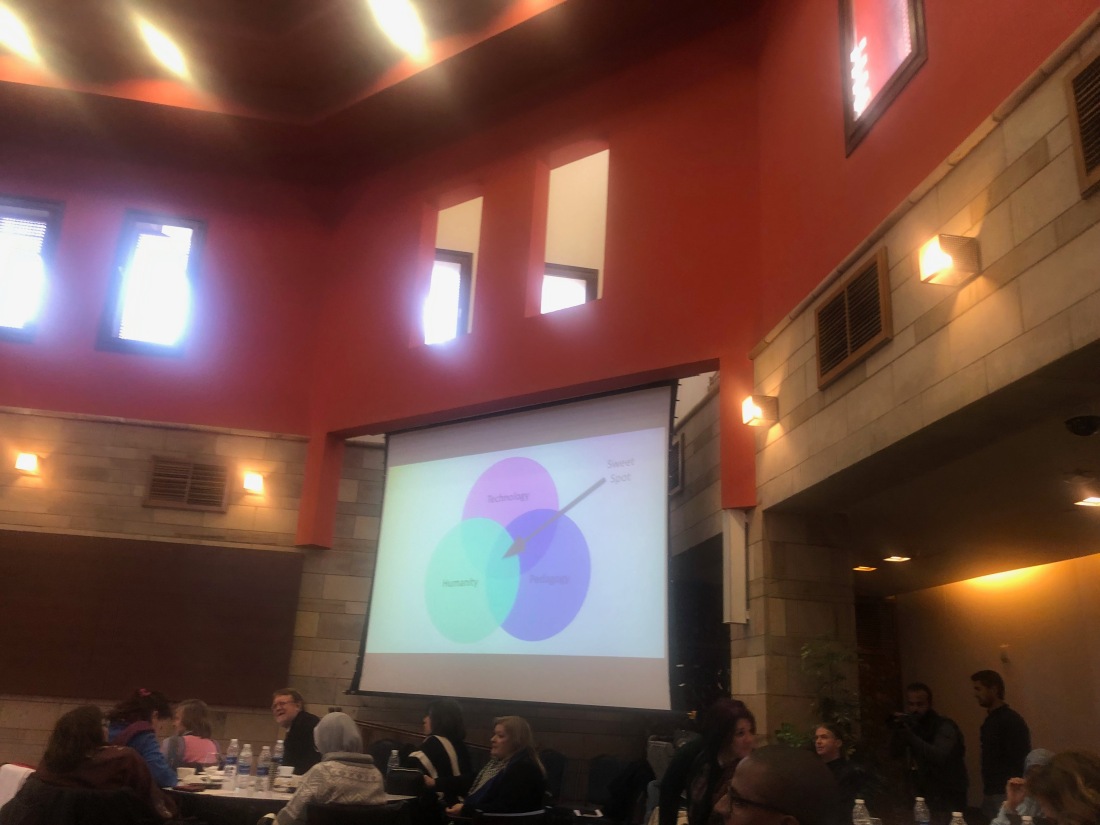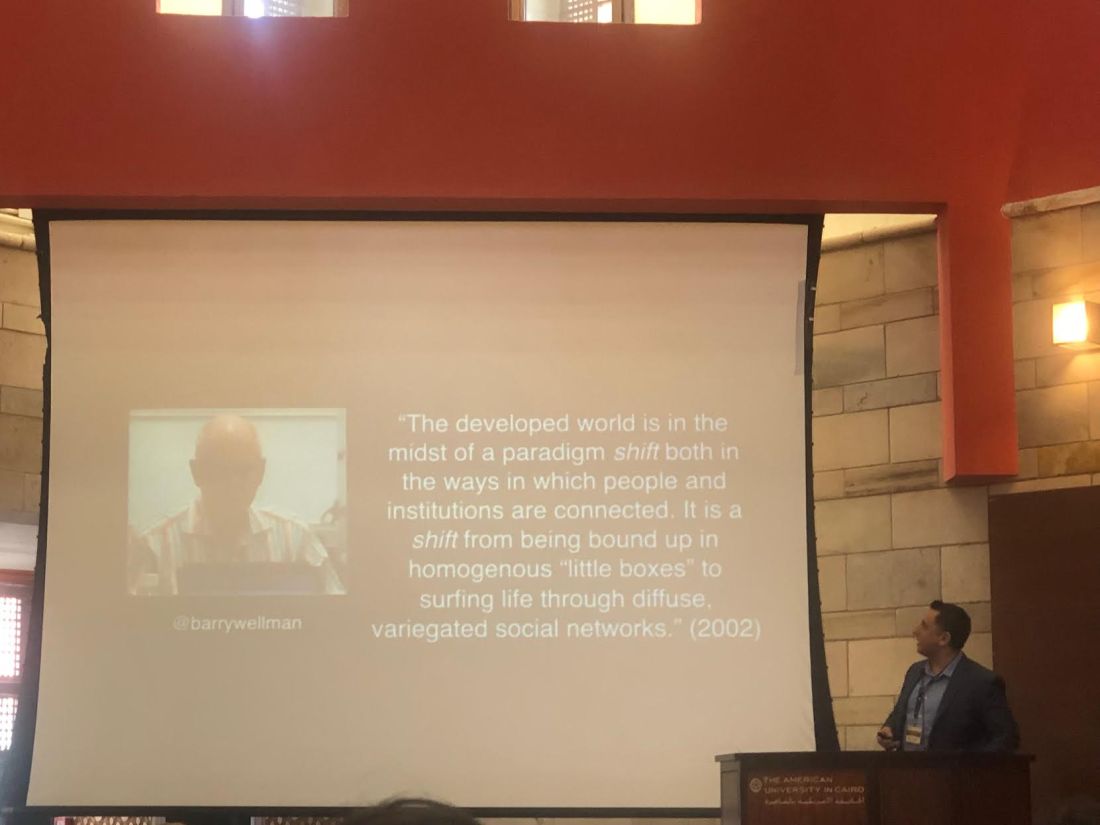On Sunday 3rd March, 2019, I attended a talk by Professor Alec Couras, who works in the faculty of education at the University of Regina, in Canada. His fields are specialization in connected network learning, critical media leaning, digital literacy, and several other CLT fields, primarily to do with the youth and how they learn. He demonstrated these techniques deeming the facilitation of CLT through the open boundaries and free access online.
Couras started this lecture saying that he spends a lot of time on several different platforms in hopes of connecting with his students and audience in several different ways, as a scholar. he said his innovative CLT techniques have enabled his students to develop their own social platforms, such as blogging, or being a Youtube vlogger, in their own time and space, outside of his course. 
Professor Couras explained that having young children and students has really opened his mind up to how the youth learn and how to better integrate their learning us to make it a lot more intriguing and enriching for them. He gave an example of his four-year-old daughter who started her own YouTube channel blogging about make up tutorials and giving her own, and he said that although she wasn’t good at make up all of the video editing and video making process was solely done by her and she’s just four years old, so he said that the youth learn a lot quicker and are very proficient in the language of technology, thus scholars should utilize this to their advantage and create new ways for better learning opportunities.
Professor Couras says that learning has changed globally and the world is very dynamic and changes very dynamic and so he tries to keep up with the very fast changing technology and means of learning through his own teaching. He explained that in 2001, MIT gave up all their content because they felt that it was not as valuable, and the content alone is not important. He also discussed the role of creative commons, seeing that it’s very popular across the web.
Also, he said that YouTube is a very good exposure to scientific literacy and can be used as a public and international channel to learn anything on it, whether physical, academic, skill, a talent, or anything really. He then goes on to compare learning in the classroom to learning on YouTube and he said that if classrooms are just content and they don’t give you anything extra that you can’t Google or search on YouTube, then the classroom is a waste of time because it shouldn’t just contain knowledge that students cannot go and memorize themselves from just one simple Google search.
Additionally, he brought in the term ‘neuroplasticity’ saying that people learn a different traits and that knowledge does not mean understanding, and that scholars and academics should not focus on merely teaching in a way that just says the knowledge and the students are expected to memorize, in contrast, they’re supposed to think of new and interactive ways that would enhance students learning.
Moreover, he gave to real life examples of creative learning, and adapting to the worlds changes, through the example of two leading countries; China and Germany. He said that China implemented texting lanes for people who want to text on of separate pavement from people who are walking without their phone. Also, Germany introduced traffic lights on the sidewalk of certain streets so people don’t have to look up at the traffic lights to know whether they can pass or not, they can merely just look down on the ground. Couras was certainly very intrigued by these two innovative ideas done by the two developed countries, saying that learning should be as innovative and different, and should comply with and be in sync with the world’s changes, just like in these two examples.
Adding on, Couras explained that technology can have both positive and negative aspects. He said that whilst technology can be utilized in negative forms, some people correct the wrong and turn it into something good, so overall it is good. He then went on to give the example of a bus monitor who was bleed and had her picture put online, but then when people saw it they decided to raise some money to compensate her; and they ended up raising enough money for her to be able to retire and not have to go back to the job where the students were bullying her. Thus, although the Internet was primarily used as a means of bullying and as a way to upset someone, it actually turned out to be good because through the Internet, thousands of people were able to see that post and raise enough money for her to live without any financial constraints.
Professor Couras introduced several different uses of technology that intertwined with learning, for example, applications like ‘photomath’ and ‘HWpic’ help students derive certain problems in their homework that they are unable to solve on their own, by connecting them to online graduate tutors. The students take a picture of their homework through the application and the application automatically connects the student to inappropriate tutor for a small fee, thus benefiting both the student and the tutor.
Furthermore, Couras explained the concept of LMS (learning management systems) such as Moodle, that promote and enhance learning even further. He believes the cleaning is socially constructive and the learning management is a synonym of teaching, it’s the idea of learning is a form of consumption. He also discusses the reemergence of social learning, “we participate therefore we are”. He states that learning should be individually focused because achievements and society are individually focused. He gave the example of China and their anti-cheating classroom arrangements where the students place a box over their heads to avoid cheating, because their exams should be taken individually.
The professor and his lecture saying the classrooms should be unbound, saying it should be an open call for networking and that students can’t control certain networks because it helps them learn even further and some of his own students kept their domains on their blogs even after their course was over. At the end of every semester he asks students to rank their contribution to the learning of others and he says that he knows he did a good job when all the students feel connected to the class and all names are mentioned as equally as each other, meaning that most students feel like they contribution did to the learning of each other as equally as others.
In my opinion, the entire lecture was very interesting and engaging however my favorite part was when he mentioned another use of the Internet and learning, when he gave the example of senior homes in the United States that get to teach Chinese students through Skyping. We got to see several video calls between seniors and their homes whilst they are teaching students in China and these students come from places all over the world. It was very nice and sweet to see how the use of technology can be used so beautifully as to connect someone who wants to do something to keep themselves busy, with someone who needs to learn English in a relatively cheap way. Another beautiful example he gave was when a morning mother posted a picture of her kissing her one-year-old after he died by telling cancer, thousands of people reiterated that image by editing and painting and drawing and animating that same photo in a beautiful way and the mother got to see them all in new, creative, and different ways.
